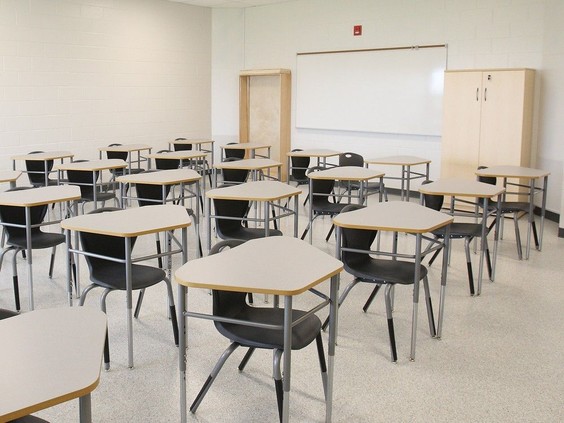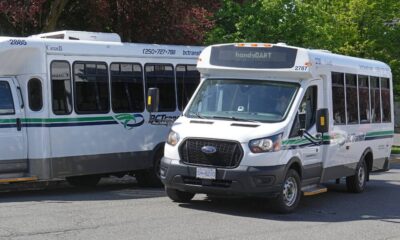World
Alberta Teachers Strike Over Class Sizes as Negotiations Resume

Teachers in Alberta are poised to strike over unresolved issues related to class sizes, as negotiations between the Alberta Teachers’ Association (ATA) and the provincial government resume on Tuesday. Recent proposals, which included a 12 per cent salary increase over four years and a commitment to hire 3,000 new teachers, were rejected by ATA members who argued that these offers failed to address fundamental concerns about increasing class sizes.
Class size has become a pivotal issue for educators not only in Alberta but across Canada. The Supreme Court of Canada has previously sided with teachers regarding their right to negotiate class size and composition. This was highlighted in a long legal battle involving the British Columbia Teachers’ Federation, culminating in a 2016 ruling that affirmed their negotiation rights.
In British Columbia, class size limits are set at 22 students for kindergarten, 24 for grades 1-3, and 30 for grades 4-12. This province employs a consultative approach, allowing teachers to have input when class sizes exceed these limits. In contrast, other provinces like Manitoba and Ontario have their own specific caps, with Manitoba limiting K-3 classes to 23 students while Ontario mandates an average secondary school class size of 23 students.
The situation in Alberta is particularly acute. Recent reports show a dramatic increase in student enrollment, with Edmonton’s numbers surging from 81,500 to over 121,000 in just over a decade. A report from January 2024 indicated that average class sizes in Edmonton Public Schools exceed recommendations established by the Alberta Commission on Learning more than twenty years ago. For example, the commission suggested a maximum of 17 students for kindergarten to grade 3, yet Edmonton classrooms average 22.5 students, with some classes exceeding 37 students.
While teachers advocate for smaller class sizes to enhance student learning, the government views larger ratios as a cost-effective strategy. Darryl Hunter, a professor at the University of Alberta, noted that perspectives on class sizes vary significantly depending on whether one is concerned about educational quality or budget constraints.
Alberta has committed significant financial resources to address these issues, allocating just under $10 billion for K-12 education in the 2025-26 budget, which includes a 4.5 per cent increase to accommodate rising enrollment. Premier Danielle Smith announced on September 17, 2024, plans for an $8.6 billion School Construction Accelerator Program aimed at creating 50,000 new student spaces within three years, with a total of 150,000 additional spaces planned by 2031.
Despite these efforts, experts like Alex Da Costa from the University of Alberta argue that the rapid growth of cities such as Edmonton and Calgary highlights a significant lack of foresight in educational policy planning. The reality of increasing student populations has not been matched by timely infrastructure development.
As negotiations continue, the outcome will significantly impact Alberta’s education system, which is grappling with the challenges of accommodating a growing student body amid ongoing demands from educators for better classroom conditions. Teachers’ unions across Canada are increasingly vocal about these systemic issues, emphasizing that the quality of education must not be compromised by administrative or budgetary constraints.
-

 Politics4 weeks ago
Politics4 weeks agoSecwepemc First Nation Seeks Aboriginal Title Over Kamloops Area
-

 World5 months ago
World5 months agoScientists Unearth Ancient Antarctic Ice to Unlock Climate Secrets
-

 Entertainment5 months ago
Entertainment5 months agoTrump and McCormick to Announce $70 Billion Energy Investments
-

 Science5 months ago
Science5 months agoFour Astronauts Return to Earth After International Space Station Mission
-

 Lifestyle5 months ago
Lifestyle5 months agoTransLink Launches Food Truck Program to Boost Revenue in Vancouver
-

 Technology3 months ago
Technology3 months agoApple Notes Enhances Functionality with Markdown Support in macOS 26
-

 Lifestyle3 months ago
Lifestyle3 months agoManitoba’s Burger Champion Shines Again Amid Dining Innovations
-

 Top Stories2 months ago
Top Stories2 months agoUrgent Update: Fatal Crash on Highway 99 Claims Life of Pitt Meadows Man
-

 Politics4 months ago
Politics4 months agoUkrainian Tennis Star Elina Svitolina Faces Death Threats Online
-

 Sports5 months ago
Sports5 months agoSearch Underway for Missing Hunter Amid Hokkaido Bear Emergency
-

 Politics5 months ago
Politics5 months agoCarney Engages First Nations Leaders at Development Law Summit
-

 Technology5 months ago
Technology5 months agoFrosthaven Launches Early Access on July 31, 2025




















